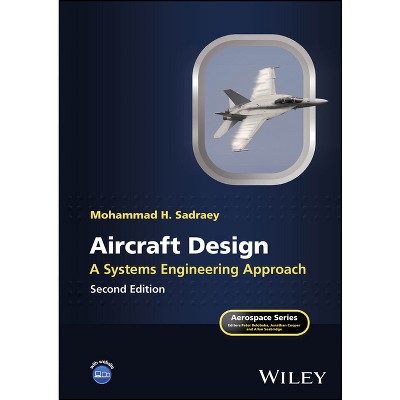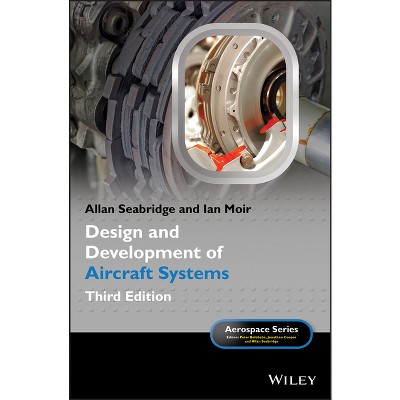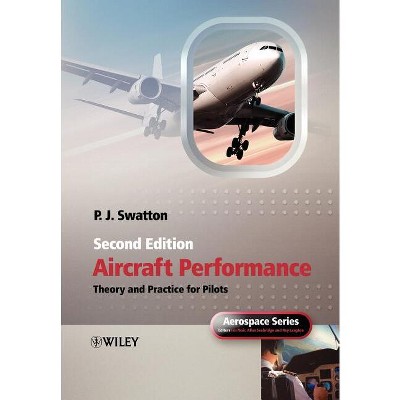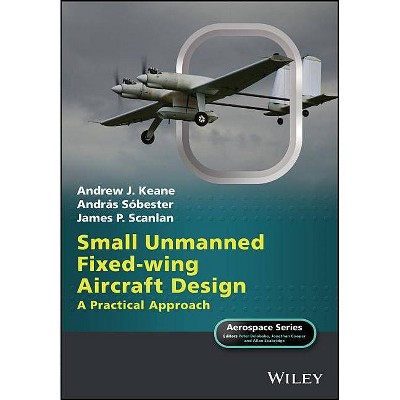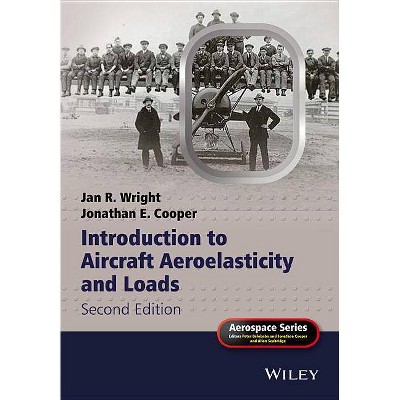Essentials of Supersonic Commercial Aircraft Conceptual Design - (Aerospace) by Egbert Torenbeek (Hardcover)

About this item
Highlights
- Provides comprehensive coverage of how supersonic commercial aircraft are designed This must-have guide to conceptual supersonic aircraft design provides a state-of-the art overview of the subject, along with expert analysis and discussion.
- About the Author: Egbert Torenbeek, PhD, is Professor Emeritus of Aircraft Design at Delft University of Technology.
- 184 Pages
- Transportation, Aviation
- Series Name: Aerospace
Description
About the Book
"Since the birth of Concorde there has been a wealth of scientific publications on topics such as the development of supersonic cruise vehicles, aerodynamics, propulsion, structural design and flight physics, in particular analysis of the sonic boom. However, since the demise of Concorde more than half a century ago, there are no designers left with the experience and knowledge required for developing a new initial design proposal. Conceptual Design of Supersonic Commercial Aircraft addresses this need and is a must-have guide to conceptual supersonic aircraft design, providing a state-of-the art overview, expert analysis and discussion. It examines the challenges of high-speed flight, covers aerodynamic phenomena in supersonic flow and aerodynamic drag in cruising flight, and discusses the advantages and disadvantages of oblique wing aircraft. The development of supersonic technology since the end of the twentieth century has primarily advanced in the field of transonic and supersonic aerodynamics. For example, many studies have been made in the field of configurations with oblique wings, promising improvements of the flight efficiency up to 20% as well as large gains in reducing the sonic boom, take-off noise and low speed performance improvements. From this point of a view, a new generation of supersonic passenger aircraft could have a commercial future a decade from now"--Book Synopsis
Provides comprehensive coverage of how supersonic commercial aircraft are designed
This must-have guide to conceptual supersonic aircraft design provides a state-of-the art overview of the subject, along with expert analysis and discussion. It examines the challenges of high-speed flight, covers aerodynamic phenomena in supersonic flow and aerodynamic drag in cruising flight, and discusses the advantages and disadvantages of oblique wing aircraft.
Essentials of Supersonic Commercial Aircraft Conceptual Design is intended for members of a team producing an initial design concept of an airliner with the capability of making supersonic cruising flights. It begins with a synopsis of the history of supersonic transport aircraft development and continues with a chapter on the challenges of high-speed flight, which discusses everything from top level requirements and cruise speed requirements to fuel efficiency and cruise altitude. It then covers weight sensitivity; aerodynamic phenomena in supersonic flow; thin wings in two-dimensional flow; flat wings in inviscid supersonic flow; aerodynamic drag in cruising flight, and aerodynamic efficiency of SCV configurations. The book finishes with a chapter that examines oblique wing aircraft.
- Provides supersonic aircraft designers with everything they need to know about developing current and future high speed commercial jet planes
- Examines the many challenges of high-speed flight
- Covers aerodynamic phenomena in supersonic flow and aerodynamic drag in cruising flight
- Discusses the advantages and disadvantages of oblique wing aircraft
Essentials of Supersonic Commercial Aircraft Conceptual Design is an ideal book for researchers and practitioners in the aerospace industry, as well as for graduate students in aerospace engineering.
From the Back Cover
Essentials of Supersonic Commercial Aircraft Conceptual Design
Provides comprehensive coverage of how supersonic commercial aircraft are designed
This must-have guide to conceptual supersonic aircraft design provides a state-of-the art overview of the subject, along with expert analysis and discussion. It examines the challenges of high-speed flight, covers aerodynamic phenomena in supersonic flow and aerodynamic drag in cruising flight, and discusses the advantages and disadvantages of oblique wing aircraft.
Essentials of Supersonic Commercial Aircraft Conceptual Design is intended for members of a team producing an initial design concept of an airliner with the capability of making supersonic cruising flights. It begins with a synopsis of the history of supersonic transport aircraft development and continues with a chapter on the challenges of high-speed flight, which discusses everything from top level requirements and cruise speed requirements to fuel efficiency and cruise altitude. It then covers weight sensitivity; aerodynamic phenomena in supersonic flow; thin wings in two-dimensional flow; flat wings in inviscid supersonic flow; aerodynamic drag in cruising flight, and aerodynamic efficiency of SCV configurations. The book finishes with a chapter that examines oblique wing aircraft.
- Provides supersonic aircraft designers with everything they need to know about developing current and future high speed commercial jet planes
- Examines the many challenges of high-speed flight
- Covers aerodynamic phenomena in supersonic flow and aerodynamic drag in cruising flight
- Discusses the advantages and disadvantages of oblique wing aircraft
Essentials of Supersonic Commercial Aircraft Conceptual Design is an ideal book for researchers and practitioners in the aerospace industry, as well as for graduate students in aerospace engineering.
About the Author
Egbert Torenbeek, PhD, is Professor Emeritus of Aircraft Design at Delft University of Technology. He graduated as an engineer in 1961 at TU Delft and in 1964 he became responsible for teaching the Aircraft Preliminary Design course at the department of Aerospace Engineering. After a sabbatical at Lockheed Georgia Company, he became a senior lecturer and full professor of the Aircraft Design chair at TU Delft, initiating research and teaching in computer-assisted aircraft design.






